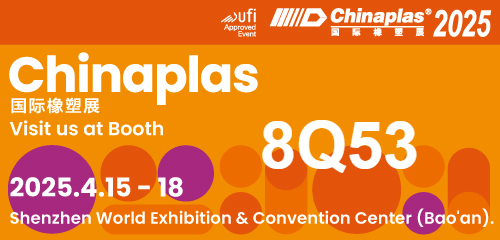Melt gear pumps, as the core equipment in the polymer production process, can convey a wide range of materials, and can be used for a variety of low-temperature, low-viscosity polymers to high-temperature, high-viscosity polymers under different pressure conditions. The materials conveyed by melt gear pumps are collectively known as melts, which are made up of polymer compounds as the base, together with other additives (auxiliaries).
According to the material application function classification, polymer materials are divided into general polymer materials, special polymer materials and functional polymer materials three categories.
General polymer materials refers to large-scale industrial production, has been widely used in construction, transportation, agriculture, electrical and electronic industry and other major areas of the national economy and people's daily life of polymer materials. This is divided into plastics, rubber, fibers, adhesives, coatings and other different types. Special polymer materials are mainly a class of polymer materials with excellent mechanical strength and heat resistance, such as polycarbonate, polyimide and other materials, has been widely used in engineering materials. Functional polymer materials are polymer compounds that have specific functional roles and can be used as functional materials, including functional separation membranes, conductive materials, medical polymer materials, liquid crystal polymer materials and so on.
Melt gear pumps can transport the melt with viscosity 1mPa.s~40000Pa.s, from water-like medium until rubber-like ultra-high viscosity medium, covering a variety of polymers.

I. General Plastics
1.PE
Low-density polyethylene (LDPE), high-density polyethylene (HDPE), linear low-density polyethylene (LLDPE)
2.PP
Polypropylene (PP)
3.PS
Transparent polystyrene (hard rubber) GPPS (PS), high impact polystyrene (HIPS)
4.ABS
Acrylonitrile-butadiene-styrene copolymer (shell material) (ABS), acrylonitrile-styrene copolymer (AS)

2, engineering plastics
1.PA polyamide
Polycaprolactam / nylon 6 / single 6 (PA6), polyhexanediamine adipic anhydride / nylon 66 / double 6 (PA66), polyundecanamide / nylon 11 (PA11), polyundecanamide / nylon 12 (PA12)
2.POM Polyoxymethylene
Homopolymerization of formaldehyde / racemic steel (POM)
3.Saturated Polyester
Polyethylene terephthalate / polyester (PET), polybutylene terephthalate (PBT)
4.Polyphenylene ether
Polyphenylene ether resin (PPO)

III. Degradable Plastics
1. Polylactic Acid (PLA)
Polylactic acid (PLA), polyglycolic acid (PGA)
2. Polyalkylene alkanoate
Poly 3 hydroxybutyrate (PHB)
3. Polyaliphatic esters
Polybutylene glycol succinate (PBS), Polybutylene glycol succinate-terephthalate (PBAT), Polybutylene glycol succinate-adipate (PBSA)
4. Polycaprolactone
Poly-ε-caprolactone (PCL)
5. Carbon dioxide copolymer (APC)
Carbon dioxide - ethylene oxide copolymer (PPE), carbon dioxide - propylene oxide copolymer (PPC), carbon dioxide - epoxy butane copolymer (PPB)

IV. thermoplastic elastomers
1. styrene (TPS)
2. polyolefin elastomers
Polyethylene - olefin copolymer (POE), polypropylene - rubber dynamic vulcanization elastomer (TPV), polypropylene - rubber (TPO)
3. Chlorine-based
Polyvinyl chloride thermoplastic elastomer (PVC)
4. TPU thermoplastic polyurethane elastomers
5. Polyamide elastomers - TPA
6. TPEE elastomers - thermoplastic polyester elastomers - TPEE

V. General Plastics
1. Thermoset Plastics
Phenolic resins (PF electrician), epoxy resins (EP sludge), amino resins - urea-formaldehyde resins (UF)
2. Polyurethane (PU)
Elastomer-thermoplastic (TPU), Foam-soft (PU sponge)
3. polymethyl methacrylate (PMMA)
4. Cellulose plastic
5. Polyolefin
Polybutylene (PB)
6666666666
VI, rubber
1. natural rubber - NR
2. Synthetic rubber
Silicone (SI), nitrile rubber (NBR), fluoroelastomer (FPM), ethylene propylene diene trioxide (EPDM)
VII. Chemical Fiber
1. Polyamides
Polyamide 6 (PA6 nylon), polyamide 56 (PA56 Sylon)
2. Polyester
Polyethylene terephthalate (PET polyester)
3. Polyacrylonitrile
Polyacrylonitrile/Acrylic (PA)
Email: sale@meltpump.com
WhatsApp: +86 158 3833 1071
>
Previous:Core Functions, Principles and Technical Advantages of the Fan Rotary Screen ChangerNext:Melt gear metering pump role and parameters
